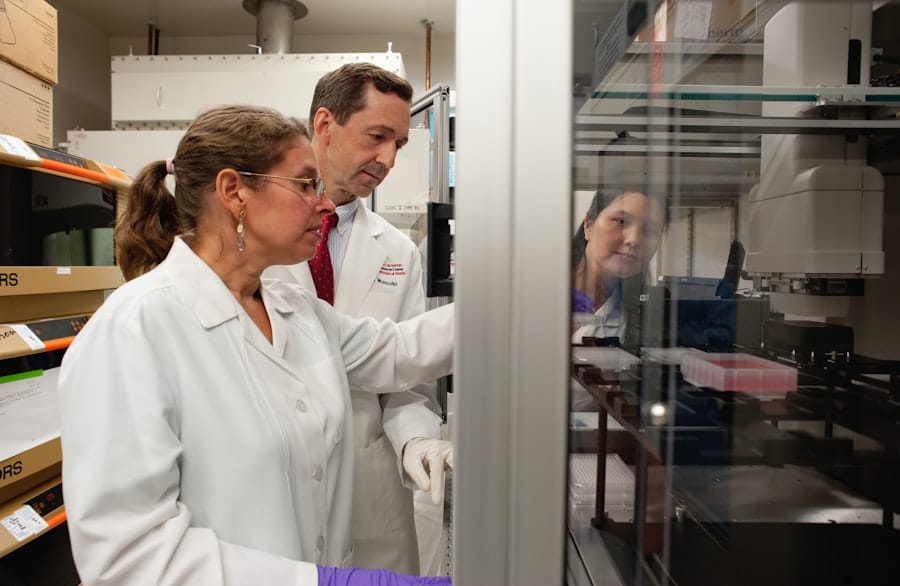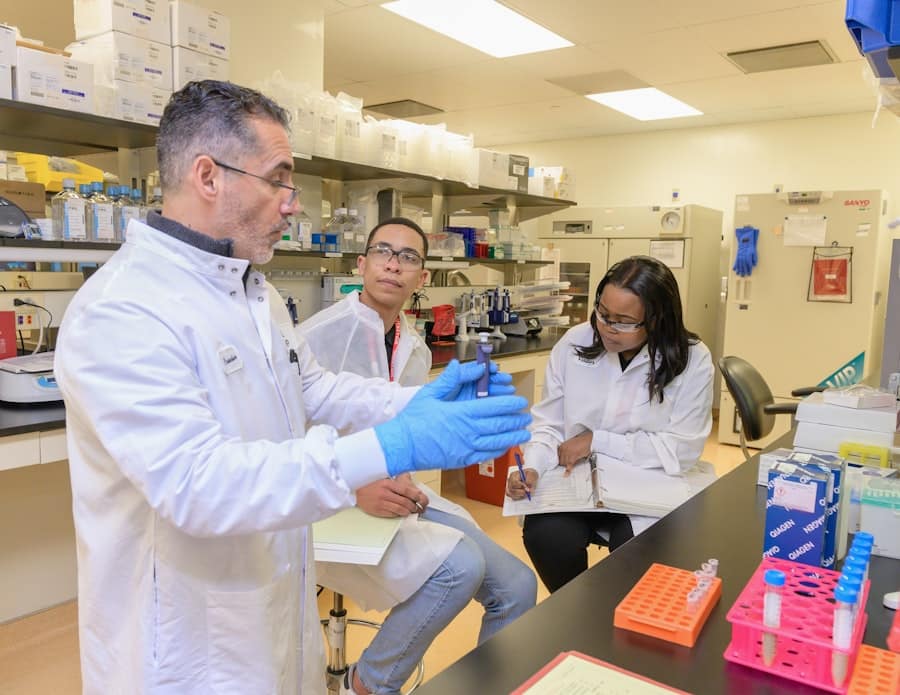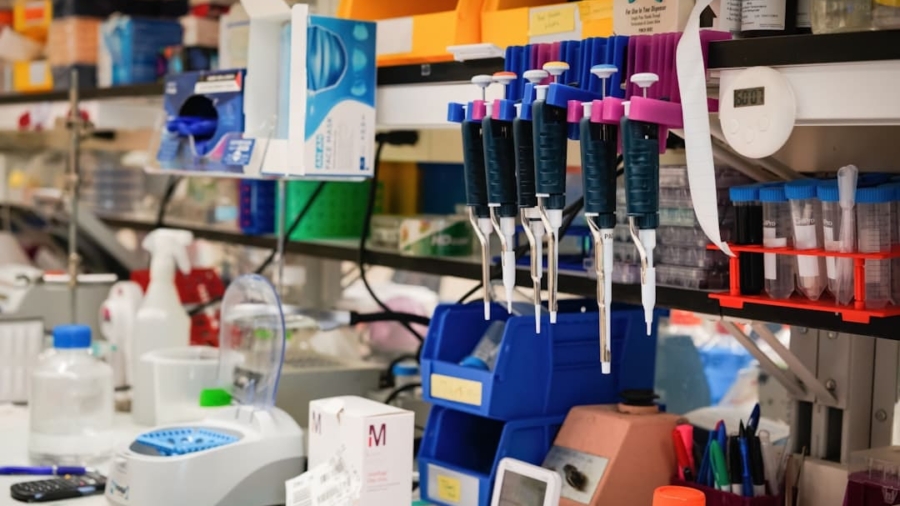Stem cell therapy represents a groundbreaking frontier in modern medicine, offering the potential to treat a myriad of diseases and conditions that were once deemed incurable. Stem cells are unique in their ability to differentiate into various cell types, which allows them to repair or replace damaged tissues and organs. This regenerative capability has sparked significant interest among researchers and clinicians alike, leading to a surge in clinical trials and therapeutic applications.
The promise of stem cell therapy lies not only in its ability to address existing health issues but also in its potential to revolutionize the way we approach disease prevention and health maintenance. The origins of stem cell research can be traced back to the early 20th century, but it gained momentum in the late 1990s with the isolation of human embryonic stem cells. These cells are pluripotent, meaning they can develop into any cell type in the body, making them particularly valuable for therapeutic purposes.
Over the years, advancements in technology and a deeper understanding of cellular biology have propelled stem cell therapy into the spotlight. Today, it encompasses a wide range of applications, from treating blood disorders to repairing heart tissue after myocardial infarction. As research continues to evolve, the landscape of stem cell therapy is rapidly changing, presenting both exciting opportunities and complex challenges.
Key Takeaways
- Stem cell therapy holds promise for treating a wide range of degenerative disorders and injuries.
- Current applications of stem cell therapy have shown success in treating conditions such as leukemia, lymphoma, and certain types of anemia.
- Stem cell therapy has the potential to revolutionize the treatment of degenerative disorders such as Alzheimer’s disease, Parkinson’s disease, and spinal cord injuries.
- Challenges and limitations of stem cell therapy include the risk of tumor formation, immune rejection, and ethical concerns surrounding the use of embryonic stem cells.
- Ethical considerations and regulation of stem cell therapy are important factors in ensuring the responsible and ethical use of this technology in healthcare.
Current Applications and Successes of Stem Cell Therapy
Currently, stem cell therapy has found its most established applications in the treatment of hematological conditions, particularly through hematopoietic stem cell transplantation (HSCT). This procedure has been successfully employed for decades to treat various forms of leukemia, lymphoma, and other blood disorders. In HSCT, stem cells are harvested from a donor or the patient’s own body and then infused into the patient after intensive chemotherapy or radiation therapy.
The transplanted stem cells migrate to the bone marrow and begin producing healthy blood cells, effectively restoring the patient’s hematopoietic system. The success rates for HSCT have improved significantly over the years, with many patients achieving long-term remission. Beyond hematological disorders, stem cell therapy is making strides in treating conditions such as spinal cord injuries and certain types of blindness.
For instance, clinical trials involving the use of mesenchymal stem cells (MSCs) have shown promise in promoting recovery from spinal cord injuries by reducing inflammation and facilitating tissue repair. Similarly, retinal pigment epithelium (RPE) cells derived from stem cells have been used in experimental treatments for age-related macular degeneration, a leading cause of blindness in older adults. These applications highlight the versatility of stem cell therapy and its potential to address a wide array of health challenges.
The Potential for Stem Cell Therapy in Treating Degenerative Disorders

Degenerative disorders, characterized by the progressive loss of function or structure of affected tissues or organs, pose significant challenges for healthcare systems worldwide. Conditions such as Parkinson’s disease, Alzheimer’s disease, and osteoarthritis are examples where traditional treatment options often fall short in halting disease progression or reversing damage. Stem cell therapy offers a beacon of hope for patients suffering from these debilitating conditions by potentially regenerating damaged tissues and restoring lost functions.
In Parkinson’s disease, for example, the progressive degeneration of dopaminergic neurons leads to motor dysfunction and a decline in quality of life. Researchers are exploring the use of induced pluripotent stem cells (iPSCs) derived from patients’ own skin cells to generate healthy neurons that can be transplanted back into the brain. Early studies have demonstrated that these transplanted neurons can integrate into existing neural circuits and improve motor function in animal models.
Similarly, in Alzheimer’s disease, stem cells may help combat neurodegeneration by promoting neurogenesis and enhancing synaptic plasticity. The ability to harness the regenerative potential of stem cells could fundamentally change the treatment landscape for these chronic conditions.
Challenges and Limitations of Stem Cell Therapy
Despite the promising potential of stem cell therapy, several challenges and limitations hinder its widespread adoption and efficacy. One significant hurdle is the complexity of stem cell differentiation and integration into host tissues. While researchers have made strides in understanding how to direct stem cells to become specific cell types, ensuring that these cells function appropriately once transplanted remains a critical challenge.
For instance, there is a risk that transplanted stem cells may not fully integrate into the surrounding tissue or may differentiate into unwanted cell types, leading to complications such as tumor formation. Another limitation is the variability in patient responses to stem cell treatments. Factors such as age, genetic background, and overall health can influence how well a patient responds to therapy.
Additionally, sourcing stem cells can present ethical dilemmas and logistical challenges. While adult stem cells are more readily available and less controversial than embryonic stem cells, they often have limited differentiation potential. This limitation necessitates ongoing research into alternative sources of stem cells, such as iPSCs or umbilical cord blood-derived stem cells, which may offer more versatility but come with their own set of challenges regarding scalability and standardization.
Ethical Considerations and Regulation of Stem Cell Therapy
The ethical landscape surrounding stem cell therapy is complex and multifaceted, primarily due to the origins of certain types of stem cells. The use of embryonic stem cells has been a contentious issue since their discovery, raising questions about the moral status of embryos and the implications of their destruction for research purposes. Various countries have established regulations governing the use of embryonic stem cells, often reflecting cultural values and ethical beliefs about life and personhood.
In contrast, adult stem cells and iPSCs generally face fewer ethical concerns but still require careful oversight to ensure responsible research practices. Regulatory frameworks play a crucial role in ensuring that stem cell therapies are safe and effective before they reach patients. In the United States, for example, the Food and Drug Administration (FDA) oversees clinical trials involving stem cell therapies to ensure compliance with safety standards.
However, the rapid pace of innovation in this field often outstrips existing regulatory mechanisms, leading to calls for updated guidelines that can accommodate new technologies while protecting patient safety. Balancing innovation with ethical considerations remains a critical challenge as researchers strive to translate laboratory findings into clinical applications.
The Future of Stem Cell Therapy Research and Development

The future of stem cell therapy research is poised for significant advancements as scientists continue to unravel the complexities of cellular biology and regenerative medicine. One promising avenue is the development of personalized medicine approaches that leverage iPSCs derived from individual patients. This strategy allows for tailored therapies that account for each patient’s unique genetic makeup, potentially improving treatment outcomes while minimizing adverse effects.
Furthermore, advancements in gene editing technologies such as CRISPR-Cas9 may enable researchers to correct genetic defects at the cellular level before transplantation, enhancing the efficacy of stem cell therapies. Additionally, ongoing research into biomaterials and tissue engineering is expected to complement stem cell therapy by providing supportive scaffolds that promote cell survival and integration within host tissues. Innovations in 3D bioprinting technology may also facilitate the creation of complex tissue structures that mimic natural organs, paving the way for more effective regenerative therapies.
As interdisciplinary collaborations between biologists, engineers, and clinicians continue to flourish, the potential for transformative breakthroughs in stem cell therapy becomes increasingly tangible.
Promising Advances in Stem Cell Therapy for Degenerative Disorders
Recent advances in stem cell therapy have yielded promising results specifically targeting degenerative disorders that have long eluded effective treatments. In multiple sclerosis (MS), for instance, researchers are investigating autologous hematopoietic stem cell transplantation (AHSCT) as a means to reset the immune system and halt disease progression. Clinical trials have shown that AHSCT can lead to significant improvements in neurological function for some patients with aggressive forms of MS, offering hope where conventional therapies have failed.
In addition to neurological disorders, advances in regenerative medicine are being applied to musculoskeletal conditions such as osteoarthritis. Mesenchymal stem cells derived from adipose tissue or bone marrow are being explored for their ability to regenerate cartilage and reduce inflammation in affected joints. Early clinical trials have demonstrated that intra-articular injections of these stem cells can lead to improved joint function and reduced pain in patients with osteoarthritis.
Implications for the Future of Healthcare and Patient Care
The implications of successful stem cell therapies extend far beyond individual treatment outcomes; they hold the potential to reshape healthcare systems on a global scale. As regenerative medicine continues to evolve, it may lead to a paradigm shift from reactive care—where treatments are administered after disease onset—to proactive strategies focused on prevention and restoration of health. This shift could significantly reduce healthcare costs associated with chronic diseases while improving overall population health.
Moreover, as personalized medicine becomes more prevalent through advancements in genomics and biotechnology, patients may experience more tailored treatment plans that consider their unique biological profiles. This individualized approach could enhance patient engagement and satisfaction while fostering a deeper understanding of disease mechanisms at both individual and population levels. Ultimately, as research progresses and clinical applications expand, stem cell therapy has the potential not only to revolutionize treatment paradigms but also to redefine our understanding of health and wellness in an aging population facing an increasing burden of degenerative diseases.
In a recent article from TrustedReviews, experts provide reviews of the latest advancements in stem cell therapy for degenerative disorders. The article discusses the potential of this innovative treatment option in addressing conditions such as Parkinson’s disease and spinal cord injuries. For more information on cutting-edge technology and medical breakthroughs, visit TrustedReviews.
FAQs
What is stem cell therapy?
Stem cell therapy is a type of regenerative medicine that uses stem cells to repair, replace, or restore damaged or diseased cells, tissues, or organs in the body.
What are degenerative disorders?
Degenerative disorders are conditions characterized by the progressive deterioration of cells, tissues, or organs in the body, leading to functional impairment and often irreversible damage.
How does stem cell therapy work for degenerative disorders?
Stem cell therapy works by introducing stem cells into the body, where they can differentiate into the specific cell type needed to repair or replace damaged or diseased cells, tissues, or organs.
What are the potential benefits of stem cell therapy for degenerative disorders?
The potential benefits of stem cell therapy for degenerative disorders include the ability to slow or halt disease progression, repair damaged tissues, improve function, and potentially reverse the effects of the disorder.
What are some examples of degenerative disorders that stem cell therapy may be used for?
Degenerative disorders that stem cell therapy may be used for include osteoarthritis, Parkinson’s disease, Alzheimer’s disease, spinal cord injuries, and heart disease, among others.
What are the current challenges and limitations of stem cell therapy for degenerative disorders?
Challenges and limitations of stem cell therapy for degenerative disorders include the potential for immune rejection, ethical concerns related to the use of embryonic stem cells, and the need for further research to optimize the safety and efficacy of the treatment.

